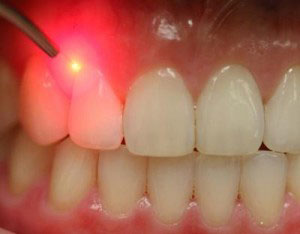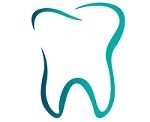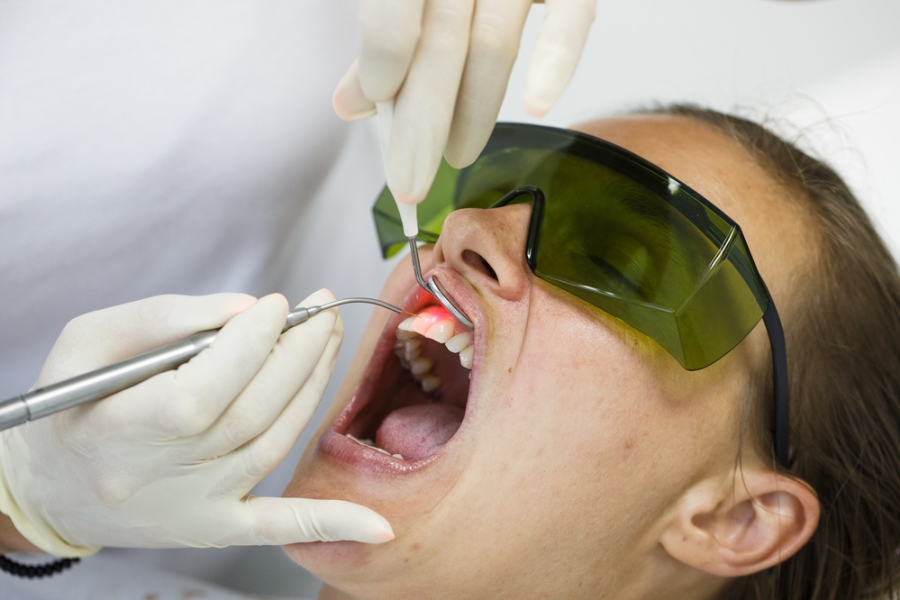Laser Therapy for Gum Disease: How Effective Is It
Are your gums feeling like a battleground, with redness, swelling, and bleeding? Laser therapy for gum disease might just be the knight in shining armor you need. Imagine a tiny beam of light, gentle yet powerful, working its magic to zap away the bacteria causing your gum woes.
This revolutionary treatment uses laser energy to target and eliminate the infection, without the need for invasive procedures. But does it really live up to the hype?
In this article, we’ll explore the effectiveness of laser therapy for gum disease. From its basics and benefits to its limitations and drawbacks, we’ll help you decide if this modern approach is the right fit for your oral health.
Key Takeaways
– Laser therapy is a minimally invasive procedure that uses a dental laser to target and eliminate bacteria causing gum disease.
– It promotes faster healing by stimulating the growth of new gum tissue and reduces pain, swelling, and bleeding during and after the procedure.
– Laser therapy effectively kills bacteria and reduces inflammation, leading to significant improvements in gum health.
– While laser therapy is a modern and advanced treatment option for gum disease, it may not be suitable for advanced stages of the condition and may not completely eliminate the need for traditional treatments such as scaling and root planing.
Understanding Gum Disease
To understand gum disease, it’s important for you to recognize that it’s a common dental condition that affects many people worldwide. Gum disease, also known as periodontal disease, is an infection of the tissues that support and surround your teeth. It’s caused by the buildup of plaque, a sticky film of bacteria that forms on your teeth. If left untreated, gum disease can lead to serious complications, such as tooth loss and bone damage.
The early stage of gum disease is called gingivitis, which is characterized by red, swollen, and bleeding gums. If not addressed, gingivitis can progress to periodontitis, where the infection spreads below the gum line and damages the bone and tissues that hold your teeth in place. Common risk factors for gum disease include poor oral hygiene, smoking, hormonal changes, certain medications, and genetic predisposition.
Preventing gum disease involves practicing good oral hygiene, such as brushing your teeth twice a day, flossing daily, and visiting your dentist regularly for professional cleanings. In addition, avoiding tobacco use and maintaining a healthy lifestyle can also contribute to gum disease prevention.
The Basics of Laser Therapy
Using laser technology, you can effectively treat gum disease and promote gum tissue healing. Laser therapy, also known as laser-assisted periodontal therapy (LAPT), is a minimally invasive procedure that has gained popularity in recent years. It involves the use of a dental laser to target and eliminate the bacteria causing gum disease, without the need for traditional scalpel and sutures.
The laser emits a concentrated beam of light that can penetrate the gum tissue and kill bacteria, reducing inflammation and promoting healing. Laser therapy offers several advantages over traditional gum disease treatments. Firstly, it’s less invasive and causes minimal discomfort, resulting in a quicker recovery time. Additionally, it’s more precise, allowing for targeted treatment of infected areas while preserving healthy tissue.
Furthermore, laser therapy stimulates the growth of new gum tissue, promoting the regeneration of gums damaged by gum disease. However, it’s important to note that laser therapy may not be suitable for everyone, and a thorough evaluation by a dental professional is necessary to determine the most appropriate treatment plan.
Benefits of Laser Therapy for Gum Disease
You can experience significant benefits from laser therapy for gum disease. Laser therapy is a modern and advanced treatment option that offers several advantages over traditional methods.
One of the major benefits is that it’s minimally invasive. Unlike traditional gum disease treatments that involve cutting and suturing, laser therapy uses a concentrated beam of light to target and remove infected tissue. This results in less pain, swelling, and bleeding during and after the procedure.
Another benefit is that laser therapy promotes faster healing. The laser stimulates the growth of new tissue, which helps to speed up the healing process. Additionally, laser therapy is highly effective in killing bacteria and reducing inflammation. The intense heat of the laser kills bacteria that cause gum disease, reducing the risk of infection. It also targets inflammation, leading to a reduction in redness and swelling.
Furthermore, laser therapy is more precise and accurate compared to traditional methods. The laser can specifically target and remove diseased tissue while leaving healthy tissue intact. This precision minimizes damage to the gums and surrounding structures.
Limitations and Drawbacks of Laser Therapy
Laser therapy for gum disease, however, does have its limitations and drawbacks that should be considered. While it’s a promising treatment option, it may not be suitable for everyone.
One limitation is that laser therapy isn’t effective for advanced stages of gum disease. If the disease has progressed to a point where there’s significant damage to the gums and surrounding structures, more invasive treatments such as surgery may be necessary.
Additionally, laser therapy may not be covered by insurance, making it a costly option for some patients. Another drawback is that multiple sessions of laser therapy may be required to achieve optimal results. This can be time-consuming and inconvenient for individuals with busy schedules.
Furthermore, laser therapy may not completely eliminate the need for traditional treatments such as scaling and root planing. These procedures may still be necessary to remove plaque and tartar buildup.
It’s important to consult with your dentist or periodontist to determine if laser therapy is the right treatment option for you and to discuss any potential limitations or drawbacks.
Examining the Effectiveness of Laser Therapy
To evaluate the effectiveness of laser therapy for gum disease, it’s important to examine clinical studies and research findings.
Here are three key findings that shed light on the effectiveness of laser therapy:
1. Reduction in bacteria: Several studies have shown that laser therapy effectively reduces the amount of bacteria present in the gum pockets. This is crucial because bacteria is the main cause of gum disease. By targeting and eliminating these harmful bacteria, laser therapy helps to prevent further damage to the gums.
2. Improved gum health: Research has demonstrated that laser therapy can lead to significant improvements in gum health. It can reduce inflammation, promote healing, and stimulate the growth of new gum tissue. This can result in firmer and healthier gums, which are less prone to bleeding, swelling, and recession.

3. Minimally invasive treatment: Laser therapy is considered a minimally invasive treatment option for gum disease. Unlike traditional gum surgery, laser therapy doesn’t require the use of scalpels or sutures. This can lead to reduced discomfort and faster recovery times for patients.
While these findings are promising, it’s important to note that laser therapy may not be suitable for all cases of gum disease. It’s always best to consult with a dental professional to determine the most appropriate treatment plan for your specific condition.
Frequently Asked Questions
Are There Any Risks or Side Effects Associated With Laser Therapy for Gum Disease?
There are some risks and side effects associated with laser therapy for gum disease. These can include:
– Temporary discomfort or pain during the procedure
– Swelling, redness, and sensitivity in the treated area afterwards
However, these side effects are generally mild and temporary. It’s important to discuss any concerns or potential risks with your dentist or periodontist before undergoing laser therapy for gum disease.
Can Laser Therapy Completely Cure Gum Disease, or Is It Only a Temporary Solution?
Laser therapy for gum disease can be an effective treatment option. It has the potential to completely cure gum disease, rather than being just a temporary solution.
The laser technology used in this therapy can target and eliminate bacteria and infected tissue, promoting gum healing and reducing inflammation.
It’s important to consult with your dentist or periodontist to determine if laser therapy is the right treatment for your specific case of gum disease.
How Long Does a Laser Therapy Session for Gum Disease Typically Last?
A laser therapy session for gum disease typically lasts around 30 minutes to an hour. During the session, the dentist will use a laser to target and remove infected gum tissue. This treatment is effective in killing bacteria and promoting gum healing.
However, the effectiveness of laser therapy may vary depending on the severity of the gum disease and individual factors. It’s best to consult with a dentist to determine if laser therapy is the right option for you.
Is Laser Therapy for Gum Disease Covered by Dental Insurance?
Laser therapy for gum disease may or may not be covered by dental insurance. It depends on your specific insurance plan. You should contact your insurance provider to inquire about coverage for this type of treatment. They’ll be able to provide you with information regarding the extent of coverage, any limitations or restrictions, and any out-of-pocket costs you may be responsible for.
It’s always a good idea to double-check with your insurance before proceeding with any dental treatment.
Are There Any Specific Aftercare Instructions or Precautions to Follow After Undergoing Laser Therapy for Gum Disease?
After undergoing laser therapy for gum disease, there are specific aftercare instructions and precautions you should follow. These include:
– Avoiding hot or spicy foods for a few days
– Gently brushing your teeth and gums twice a day
– Using a saltwater rinse to keep the area clean
– Refraining from smoking or using tobacco products
Additionally, it’s important to attend follow-up appointments with your dentist to ensure proper healing and monitor your progress.
Conclusion
In conclusion, laser therapy has shown promising results in treating gum disease. It offers benefits such as reduced pain, faster healing, and minimal bleeding.
However, it’s important to note that laser therapy has its limitations and may not be suitable for all cases of gum disease.
Further research is needed to fully understand its long-term effectiveness.
Overall, laser therapy can be effective as a part of a comprehensive treatment plan for gum disease, but individual patient factors should be considered.

Welcome to my website! My name is Jett Kirkland, and I am a passionate and dedicated Dental Educator with a strong focus on periodontal treatments, oral infections and care, dental laser therapy, and holistic gum health. With years of experience in the dental field, I am committed to providing valuable information and resources to help individuals achieve optimal oral health.

